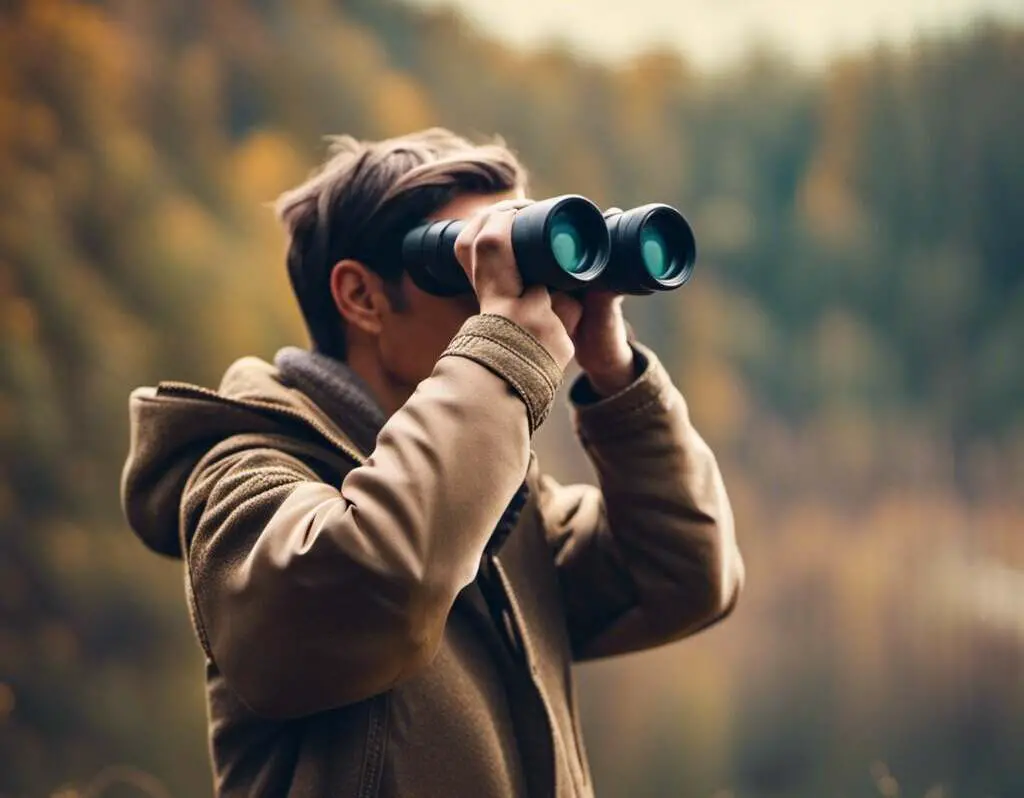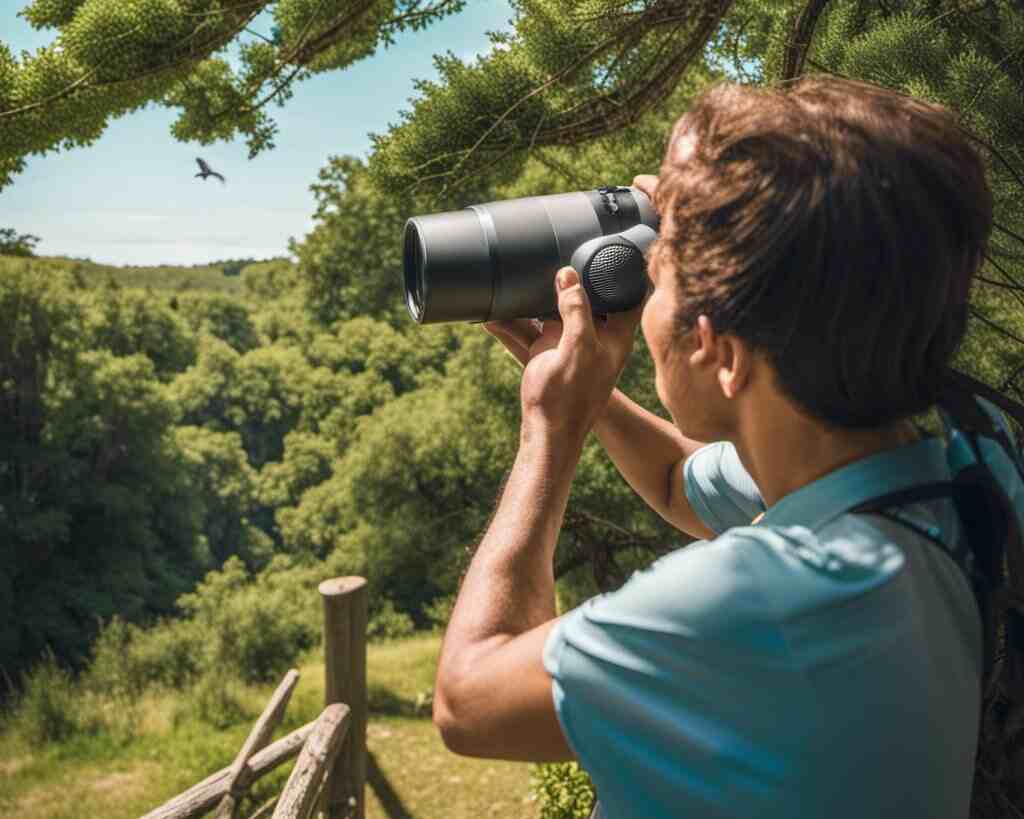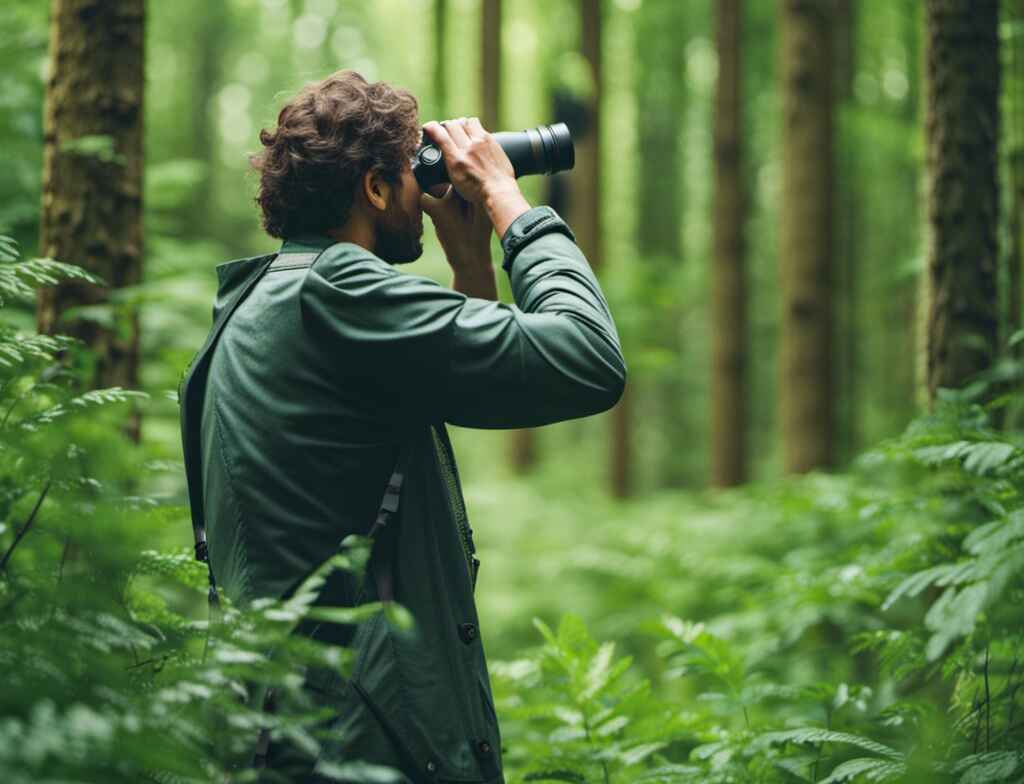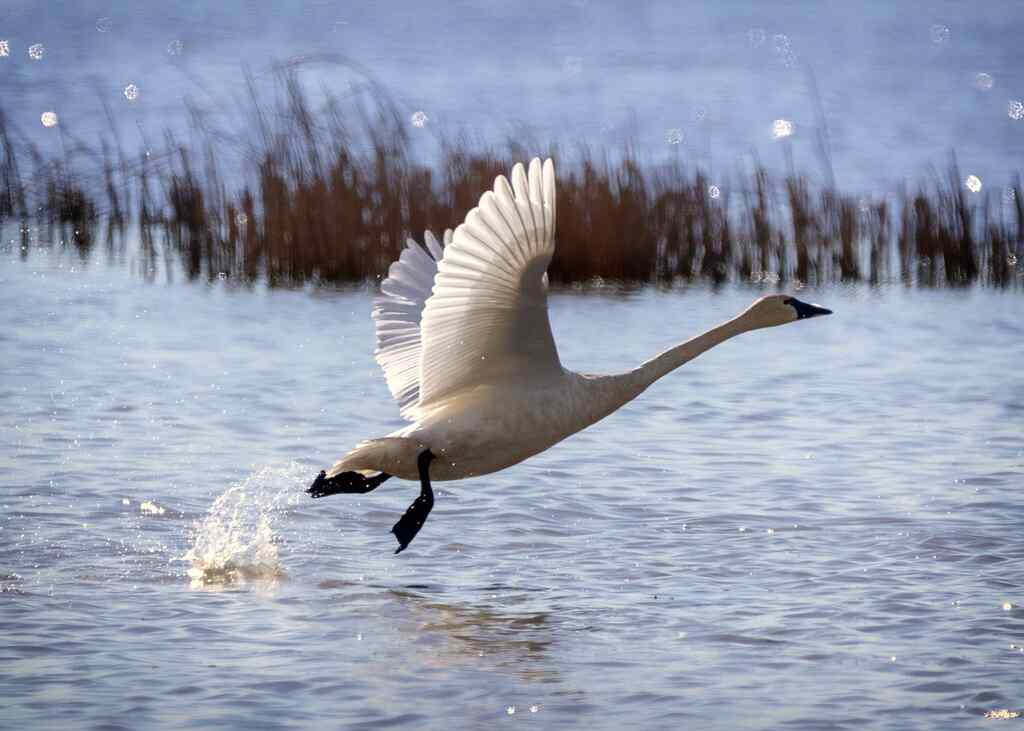Embark on an extraordinary avian adventure as we unveil the captivating world of “Best Birdwatching Spots in Alaska.” Picture yourself immersed in breathtaking landscapes, where untamed wilderness and majestic wildlife intertwine harmoniously.
From the icy northern coasts to lush temperate rainforests, Alaska offers a haven for avian enthusiasts. Encounter a symphony of songbirds, rare migratory species, and soaring raptors that grace the skies.
Our ultimate guide will lead you through uncharted territories, revealing hidden gems, expert tips, and insider secrets that will make your birdwatching journey unforgettable.
Get ready to spread your wings and dive into the heart of Alaska’s vibrant and diverse birding paradise.
Table of Contents
- 1 Key Takeaways
- 2 Best Birdwatching Hotspots In Alaska
- 3 Denali National Park and Preserve
- 4 Kenai Fjords National Park
- 5 Kodiak Island
- 6 Arctic National Wildlife Refuge
- 7 Anchorage Coastal Wildlife Refuge
- 8 Mendenhall Wetlands State Game Refuge
- 9 Frequently Asked Questions
- 9.1 What is the best time of year to visit Denali National Park and Preserve for birdwatching?
- 9.2 Are there any specific bird species that are commonly spotted in Kenai Fjords National Park?
- 9.3 Are there any guided birdwatching tours available on Kodiak Island?
- 9.4 What is the significance of Arctic National Wildlife Refuge for birdwatching enthusiasts?
- 9.5 Is it possible to spot any rare or endangered bird species at Anchorage Coastal Wildlife Refuge?
- 10 Conclusion
- 11 Author
Key Takeaways
- Denali National Park and Preserve and Kenai Fjords National Park are popular birdwatching hotspots in Alaska.
- Kodiak Island and Arctic National Wildlife Refuge also offer diverse habitats and attract birdwatchers.
- The Anchorage Coastal Wildlife Refuge and Mendenhall Wetlands State Game Refuge provide opportunities to observe shorebirds and diverse bird species.
- Conservation efforts and volunteer programs play a crucial role in protecting and preserving bird populations in these hotspots.

Best Birdwatching Hotspots In Alaska
Some of the best birdwatching hotspots in Alaska include Denali National Park, Kenai Fjords National Park, Kodiak Island, Mendenhall Glacier, Creamer’s Field, and Anchorage Coastal Wildlife Refuge. These locations offer diverse habitats and a wide range of bird species for birdwatchers to enjoy.
Denali National Park and Preserve
Denali National Park and Preserve offers a diverse range of bird species, thriving in its varied habitats of tundra, taiga, and lowland forests.
Exploring wildlife diversity in this area provides captivating views of Denali, the highest peak in North America.
Ornithologists and birdwatching enthusiasts will find a plethora of opportunities to observe and study various bird species in this unique ecosystem.
One captivating bird species that can be found in Denali National Park is the golden eagle (Aquila chrysaetos).
With a wingspan reaching up to seven feet, this majestic bird of prey is known for its powerful flight and keen eyesight.
Its plumage varies from dark brown to golden, providing excellent camouflage in its surroundings.
Golden eagles typically inhabit open areas, including tundra and mountainous regions, using their sharp talons and powerful beaks to catch small mammals and birds.
Another fascinating bird species found in Denali National Park is the American dipper (Cinclus mexicanus).
This small, plump bird has a dark gray body and a white chest, which allows it to blend in with its rocky habitat along fast-flowing rivers and streams.
The American dipper is known for its unique behavior of diving into the water to forage for aquatic insects and small fish.
It is also recognized for its melodious song, which it uses to establish territories and attract mates.
Denali National Park and Preserve offers a wide range of habitats that support diverse bird species.
The tundra, characterized by low shrubs and mosses, attracts species such as the snowy owl (Bubo scandiacus) and the willow ptarmigan (Lagopus lagopus), which rely on camouflage to blend in with their surroundings.
The taiga, a coniferous forest, provides a habitat for species like the boreal owl (Aegolius funereus) and the pine grosbeak (Pinicola enucleator), which take advantage of the dense tree cover for nesting and foraging.
Additionally, the lowland forests, with their mix of deciduous and coniferous trees, attract species such as the varied thrush (Ixoreus naevius) and the hermit thrush (Catharus guttatus) with their rich vegetation and abundant food sources.
Denali National Park and Preserve is a prime location for birdwatching enthusiasts and ornithologists alike.
The diverse habitats of tundra, taiga, and lowland forests provide a home for a wide variety of bird species, each with their own unique characteristics and behaviors.
Exploring the wildlife diversity in this area not only offers captivating views of Denali, but also allows for detailed observations and study of the fascinating bird species that call this place home.
Kenai Fjords National Park
Located in the southern part of the state, Kenai Fjords National Park offers a landscape of breathtaking fjords, glaciers, and coastal forests that provide a unique habitat for a diverse range of bird species.
Birdwatching enthusiasts visiting the park can expect to witness a variety of coastal wildlife sightings, making it an ideal destination for observing avian species in their natural habitat.
Hiking trails within the park provide ample opportunities for birdwatching, allowing visitors to explore different habitats and encounter various bird species along the way.
The park’s coastal forests attract migratory birds during certain seasons, providing an opportunity to witness their migration patterns and observe plumage variations.
Visitors may also have the chance to observe breeding habits, such as courtship displays and territorial behavior, as well as listen to the vocalizations of different bird species.
The park’s diverse ecosystems, including its fjords, forests, and coastal areas, offer a rich and rewarding experience for birdwatchers seeking unique bird species and detailed observations.

Kodiak Island
Kodiak Island, situated in southwestern Alaska, offers a diverse and captivating environment that entices nature enthusiasts to explore its rugged landscapes and encounter a wide range of wildlife.
The island’s rich biodiversity and unique geographical features make it an ideal destination for birdwatching.
Kodiak Island is home to numerous bird species, including the iconic Bald Eagle (Haliaeetus leucocephalus) and the elusive Tufted Puffin (Fratercula cirrhata).
Birds on the island exhibit fascinating plumage variations, with some species displaying vibrant colors and intricate patterns.
Observations reveal the birds’ behaviors, such as feeding habits, mating displays, vocalizations, and interactions with other bird species.
The island’s diverse habitats, which include coastal areas, forests, and wetlands, provide suitable conditions for different bird species.
Kodiak Island also hosts birding festivals that celebrate its wildlife diversity, attracting birdwatchers from around the world.
These festivals offer a unique opportunity to observe and appreciate the fascinating birdlife that inhabits this remarkable island.
Arctic National Wildlife Refuge
The Arctic National Wildlife Refuge, renowned for its vast and pristine wilderness, offers a unique and untouched habitat for a wide range of wildlife species.
Birdwatchers and ornithologists are particularly drawn to this remote region due to its diverse bird population dynamics.
The refuge is home to several migratory bird species, including the Arctic tern (Sterna paradisaea), which travels thousands of miles each year from its breeding grounds in the Arctic to its wintering grounds in the Antarctic.
Plumage variations are also evident in the refuge, with the striking black and white patterns of the common loon (Gavia immer) and the vibrant orange hues of the northern cardinal (Cardinalis cardinalis) standing out among the vegetation.
Breeding habits vary among bird species within the refuge, with some utilizing the tundra for nesting, such as the tundra swan (Cygnus columbianus), while others, like the bald eagle (Haliaeetus leucocephalus), prefer nesting in the forested areas near rivers and lakes.
The Arctic National Wildlife Refuge provides a vital sanctuary for these bird species, showcasing the importance of protecting and preserving this pristine ecosystem for future generations of birdwatchers.

Anchorage Coastal Wildlife Refuge
The Anchorage Coastal Wildlife Refuge is a prime location for birdwatching enthusiasts to watch thousands of shorebirds during migration season.
Ornithologists can observe the plumage variations, breeding habits, and migration patterns of various bird species as they make their way along the coastal trails and observation points.
Additionally, this refuge provides an opportunity for birdwatchers to learn about local conservation efforts and the unique ecological factors that make this area important for birdwatching.
Watch Thousands of Shorebirds during Migration Season
During migration season, the shores of Alaska transform into a bustling avian metropolis, as thousands of shorebirds grace the landscape like a symphony of wings.
Birdwatching enthusiasts flock to the coastal areas to witness this remarkable spectacle.
The Alaskan coastline provides a vital stopover for a variety of shorebird species during their long-distance journeys.
These birds exhibit fascinating migration patterns, with some traveling thousands of miles from their breeding grounds in the Arctic to their wintering grounds in the Southern Hemisphere.
Ornithologists have observed plumage variations among different species, such as the striking black-and-white patterns of the Black-bellied Plover (Pluvialis squatarola) and the delicate mottled feathers of the Western Sandpiper (Calidris mauri).
These birds engage in feeding frenzies along the coast, probing the mudflats with their long, slender bills in search of invertebrates.
The annual birdwatching festivals held in Anchorage Coastal Wildlife Refuge celebrate the conservation of these magnificent shorebirds, providing an opportunity for enthusiasts to admire their beauty and learn about their breeding habits.
The refuge’s diverse habitats, including sandy beaches, tidal mudflats, and coastal marshes, attract a wide range of bird species.
Birdwatchers can also witness breathtaking interactions between different bird species, as they compete for limited resources and establish territories.
The conservation efforts aimed at protecting these habitats are crucial for the long-term survival of these migratory shorebirds.
Explore Coastal Trails and Observation Points
Nestled along the scenic coastline, visitors can embark on mesmerizing journeys through a network of coastal trails and observation points, offering panoramic vistas of the diverse habitats and captivating wildlife that call these shores home.
Coastal photography enthusiasts will find ample opportunities to capture stunning images of bird species in their natural habitats.
Equipped with the necessary birdwatching equipment, enthusiasts can closely observe the behavior and physical characteristics of avian visitors.
The migration patterns of various bird species can be observed, with plumage variations adding to the spectacle.
Breeding habits and mating displays provide further insights into the fascinating world of these feathered creatures.
Vocalizations and interactions with other bird species can be witnessed, painting a vivid picture of their social dynamics.
These coastal trails and observation points showcase the unique habitats and ecosystems that attract and support a rich diversity of bird species, making them important destinations for birdwatching enthusiasts.
Learn about Local Conservation Efforts
Local conservation efforts in this region have played a crucial role in preserving and protecting the diverse habitats and ecosystems that support a rich array of bird species.
These efforts have been instrumental in creating a favorable environment for various bird species, allowing them to thrive and carry out their natural behaviors.
- Local volunteer opportunities: Individuals interested in contributing to bird conservation can participate in local volunteer programs, such as bird banding, nest monitoring, and habitat restoration projects. These activities help gather valuable data and contribute to the overall understanding and conservation of bird populations.
- Impact of climate change: The effects of climate change are being closely monitored in this region, as they can have significant implications for bird species. Changes in temperature, precipitation patterns, and habitat availability can influence migration patterns, breeding habits, and food availability for birds. Conservation efforts in this area focus on understanding and mitigating these impacts to ensure the long-term survival of bird populations.
Overall, the local conservation efforts in this region not only protect and preserve bird species but also provide opportunities for individuals to actively contribute to bird conservation through volunteer programs.
The impact of climate change is also a significant focus, highlighting the importance of understanding and mitigating its effects on bird populations.

Mendenhall Wetlands State Game Refuge
The vast expanse of the Mendenhall Wetlands State Game Refuge offers birdwatchers an opportunity to observe a diverse array of avian species against the backdrop of stunning coastal landscapes.
This refuge, located near Juneau, Alaska, is a haven for numerous bird species due to its rich wetland habitats and proximity to the ocean.
Birdwatchers visiting the Mendenhall Wetlands may encounter a variety of bird species, including the Bald Eagle (Haliaeetus leucocephalus),
Trumpeter Swan (Cygnus buccinator), and Greater Yellowlegs (Tringa melanoleuca). These birds exhibit fascinating behaviors such as migration patterns, plumage variations, and breeding habits.
For instance, the Bald Eagle, with its distinctive white head and brown body, is known for its impressive aerial displays during mating season.
The wetlands provide ample food sources for these birds, including fish, insects, and plants.
The lush vegetation, marshes, and intertidal areas of the refuge create a unique habitat that supports a vibrant bird population.
Frequently Asked Questions
What is the best time of year to visit Denali National Park and Preserve for birdwatching?
The best months to visit Denali National Park and Preserve for birdwatching are during the spring and summer when bird migration is at its peak.
Detailed observations reveal a variety of bird species, including plumage variations and breeding habits, while the habitat descriptions encompass diverse ecosystems and geographical features that attract and support these birds.
Are there any specific bird species that are commonly spotted in Kenai Fjords National Park?
Kenai Fjords National Park is home to various bird species, including the Kittlitz’s murrelet and the black-legged kittiwake. The best time to visit Denali for birdwatching is during the summer months when migratory birds are present.
Are there any guided birdwatching tours available on Kodiak Island?
Guided birdwatching tours on Kodiak Island offer an opportunity to observe a diverse range of bird species. The best birdwatching spots on the island include the coastal cliffs and wetlands, where migratory birds can be seen displaying plumage variations and engaging in breeding habits.
What is the significance of Arctic National Wildlife Refuge for birdwatching enthusiasts?
The Arctic National Wildlife Refuge holds great significance for birdwatching enthusiasts. Understanding the impact of climate change on bird populations in Alaska is crucial for preserving their habitats and monitoring changes in migration patterns, breeding habits, and plumage variations.
Is it possible to spot any rare or endangered bird species at Anchorage Coastal Wildlife Refuge?
Rare and endangered bird species can be spotted at the Anchorage Coastal Wildlife Refuge. Ornithologists have observed various species, noting their plumage variations, migration patterns, and breeding habits. The refuge’s diverse habitats, including vegetation, water bodies, and climate conditions, attract and support these birds.

Conclusion
In conclusion, Alaska offers a plethora of birdwatching hotspots that are sure to captivate both novice and expert bird enthusiasts.
Denali National Park and Preserve, with its diverse landscapes and varied altitudes, provides a haven for a wide range of bird species.
Kenai Fjords National Park boasts stunning coastal habitats where migratory birds can be observed in their natural environment.
Kodiak Island, known for its rich biodiversity, offers opportunities to witness unique plumage variations and breeding habits.
The Arctic National Wildlife Refuge and Anchorage Coastal Wildlife Refuge serve as critical stopover points for numerous bird species during their migration.
Lastly, the Mendenhall Wetlands State Game Refuge is a prime location to observe waterfowl and their intricate interactions with other bird species.
These habitats, with their distinct geographical features and ecological factors, create an immersive experience for birdwatchers, allowing them to witness the wonders of avian behavior and marvel at the intricate beauty of these winged creatures.


